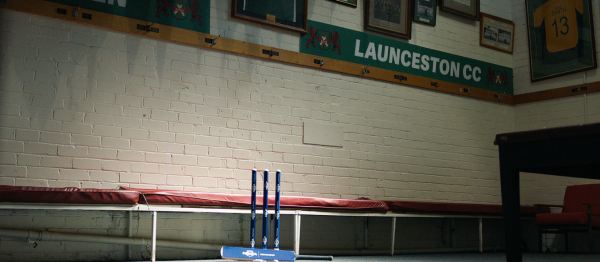20 December 2022
Heroing the helpers behind our cricketers. Part 3
Behind every Australian cricketer, stands a group of helpers and volunteers and people who inspire their success. For proud Kamilaroi woman, Hannah Darlington, the accolade goes to Eddie Gilbert. The man who bowled Sir Donald Bradman for a duck and arguably the most famous Indigenous player of our time. His legacy is celebrated today through the help of another proud indigenous woman -aptly called ‘Mum Vina’ who has dedicated her life to inspire future generations.

Hannah Darlington has become the third Indigenous cricketer to play for the Australian Women's Cricket Team. She has nominated Eddie Gilbert as her hero.
Kamilaroi woman Hannah Darlington, is knocking it out of the park and not just when it comes to cricket. The 20-year-old, is only the third Indigenous cricketer to play for the Australian Women’s Cricket Team, joining the ranks of Faith Thomas and Ash Gardner.
She praises legend Eddie Gilbert for paving the way.
“Eddie Gilbert and his legacy in indigenous cricket as one of the fastest bowlers to play the game shows the importance of bringing to life the stories of the amazing aboriginal cricketers to come before us.”
Hannah signed with the Sydney Thunder ahead of the 2017–18 Women's Big Bash League season, when she was just 15 and became the youngest-ever captain in New South Wales' 165-year history of senior cricket teams in 2021, standing in for Alyssa Healy in a Women’s National Cricket League match against Tasmania.
She won the Betty Wilson Young Cricketer of the Year award that year, the ultimate accolade that is voted by the player’s peers. Hannah grew up in Western Sydney and began playing cricket in her backyard with her dad and brother. Her role as an advocate for her mob is not lost on her on both the local and international stage. Nor is the importance of honoring the legacy of Eddie Gilbert and inspiring players who come after her - just as he has.
“As a fellow fast bowler, his speed and determination have made an impact because we know that these players who came before us can pave the way for us as well. He has inspired not only the people of Cherbourg, but the wider indigenous cricketing community, including myself.” - Hannah Darlington
Lavina Dynevor is another such helper. She hails from Waka Waka land in Cherbourg -home of Eddie Gilbert who’s, legacy she uses to help inspire future generations.
Along with her husband Jeffrey, the woman they call Mama Liv, manages the sport complex and runs after-school activities and holiday programs for the kids. Her enthusiasm and dedication are crucial for giving children access to cricket and helping them connect with their culture and history. Cherbourg is a largely indigenous town, 170 km north-west of Brisbane located on the Barambah Creek with an amazing historical claim to cricketing fame.
“Cricket is a very important part of the story of this community. Sharing Eddie’s story helps to inspire the kids to see that they can achieve anything if they just put their mind to it. Something as simple as backyard cricket with your family and friends could take you places - you could even play for your country. It could help you to achieve your dreams. “ - Lavina Dynevor
Lavina feels that her goal is to help these kids and this community be the best it can be. She is the glue of this community, helping the community to thrive through sport. Her programs bring the community together. (Lavina Dynevor)
The Eddie Gilbert story
Gilbert was born in 1905 at the Durundur Aboriginal Reserve near Woodford in south-eastern Queensland. He was a member of the stolen generation. He began showing great cricket skill at a very young age and started playing cricket at 15 years old, when he was working in the Redgate area on local farms. No one could throw a ball as fast as Eddie. Scouts spotted his skill and he was taken Brisbane to demonstrate his abilities before officials of the Queensland Cricket. Eddie was included in the state team and made an impressive debut taking fifteen wickets in five matches in the first summer season in 1930.
The day a legend was born
It happened at the Sheffield Shield in 1931. Eddie was opening bowler. His first ball, a bumper, had the opening batsman caught behind. Then Bradman was up. The first ball knocked the bat from Donald Bradman’s hands. The second made him fall backwards on the pitch. And the third had him caught behind. Eddie Gilbert became only the third man to dismiss The Don for a duck in first class cricket that day. Bradman stated famously that Gilbert was the fastest bowler he had ever faced.
For Barambah people, Eddy’s feats have become part of Barambah folklore. Eddy’s history helps me bring hope and triumph to this community.
A legacy of hope and triumph
After retiring from cricket, Eddie returned to his ancestral home of Cherbourg. It has a population of 2000 of which about 98% is Indigenous and proud of their community, with its unstoppable spirit and a passion for sport. Cricket is a part of Cherbourg’s identity, as is its most famous player, Eddie Gilbert. Keeping that identity strong and its power to inspire alive are an exhibition dedicated to its cricketing great, complete with statue and memorabilia, and the stories, like those told by Lavina to Hannah, of the player who became all he could be.



